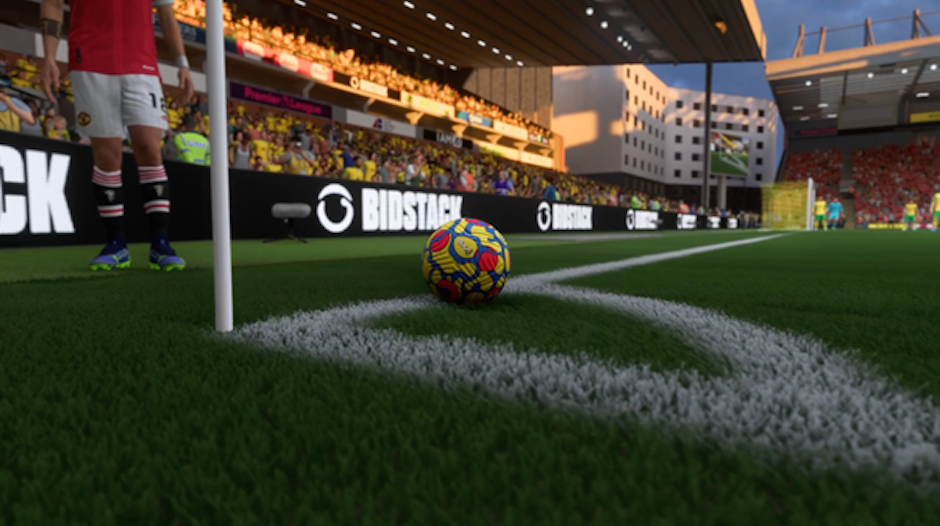What brands need to know about a seminal year for women in sport and gaming
By Lisa Hau (CSO, Bidstack)

According to financial services giant Ally Financial’s recent campaign, ‘Monumentally’, “the game has changed… and it won’t ever be the same”. I’m inclined to agree; it has been a monumental year for women’s sports.
The same could certainly be said of 2022, although the sheer volume of events that year meant that eyeballs and brand dollars had to choose between an embarrassment of sporting riches. In 2023, the marquee event on the calendar was arguably the FIFA Women’s World Cup in Australia & New Zealand.
This week, another milestone will be hit. EA Sports FC 24, the successor to the EA Sports FIFA series, launched worldwide. For the first time, its flagship game mode, Ultimate Team, will include female players, who will line up alongside their male counterparts on the virtual pitch.
In this seminal year, what do brands need to know about the new sports sponsorship landscape?
Bumper numbers
Over two billion people worldwide tuned into the Women’s World Cup. Almost two million spectators packed out stadiums across the tournament as my adopted country (England) knocked out my home country (Australia) on the way to ultimately being pipped by Spain. The ‘fifawwc’ hashtag on TikTok notched up 3.9 billion video views, and Fifa’s official account amassed 1.5 million new followers during the tournament, taking its total to 2.7 million.
While football may be the most visible success story, there are others. Continuing the Anglo-Aussie theme, this year’s Ashes was the first to promote the men’s and women’s series together. The women’s series alone was watched by 5.3 million fans on live TV, which was more than double the audience for the 2019 edition.
Research estimates that the average viewer of the women’s World Cup had around £300 of disposable income each month, with a remarkably even gender split among viewers of 52% male and 48% female. It’s no wonder the English Football Association now has 17 commercial partners for the women’s game – up from six in 2017 - including Google Pixel, Nike and Barclays.
We’re in the game
Working at Bidstack, a business which launched into gaming through a partnership with Sports Interactive’s legendary Football Manager series, the inclusion of women in EA Sports FC 24 Ultimate team is particularly exciting.
To put this into context, this is EA’s flagship engagement and revenue generator, not a limited-time expansion or side mode, and female players will play in the same squads as the men. EA has given the top female players stats that will make them widely used in-game, providing a massive boost for female gamers, streamers and women’s football (and a rallying point for gammons everywhere - more on that later).
EA’s drive to make its sports games more inclusive places (its NHL ice hockey game also included female athletes last year) should pique the interest of brands looking to reach the vast, diverse audiences in video games. Sports games, in particular, offer huge opportunities for targeted engagement of players with relevant creative and messaging while they’re having fun in ways that can even enhance the realism of the game itself. Earlier this year, Bidstack partnered with the NFL’s Washington Commanders to enable the team to offer its commercial partners access to its virtual stadium in the officially licensed game, NFL PRO ERA.
Ongoing battles
Even in this fantastic year for women in sport and gaming, it’s important to recognize how far there are still obstacles to overcome.
Despite household names such as McDonald’s, Budweiser and Unilever sponsoring the Women’s World Cup this summer, the total value of sponsorship of the tournament is estimated to have been just 18% of the amount generated by the men’s event in 2022. The tournament almost suffered from a TV blackout due to broadcasters’ lowball offers, and England’s star goalkeeper had a very public spat with Nike over her jersey not being available for her family and friends to buy.
In the gaming world, EA’s inclusion of women in Ultimate Team has led to a predictable outpouring of rage in some quarters. The least toxic manifestation of this centers on the game’s realism. Last year, I could play Ferenc Puskás (b. 1927, d. 2006) and Petr Čech (a retired goalkeeper) as my strikeforce, but according to the Twitter(X)-sphere, a top women’s forward like Sam Kerr is a step too far.
Nevertheless, to end on a positive note, a bumper year for women’s sports and gaming offers brands a tantalizing array of new and expanded commercial opportunities. Huge global brands have now expanded their media plans to cover women’s sports as well as men’s. Others with lesser budgets have the opportunity to leverage the momentum behind women’s sports alone to reach similar audiences at (currently) much more affordable rates. All have the means to make gaming and everything it has to offer part of their media plans.

